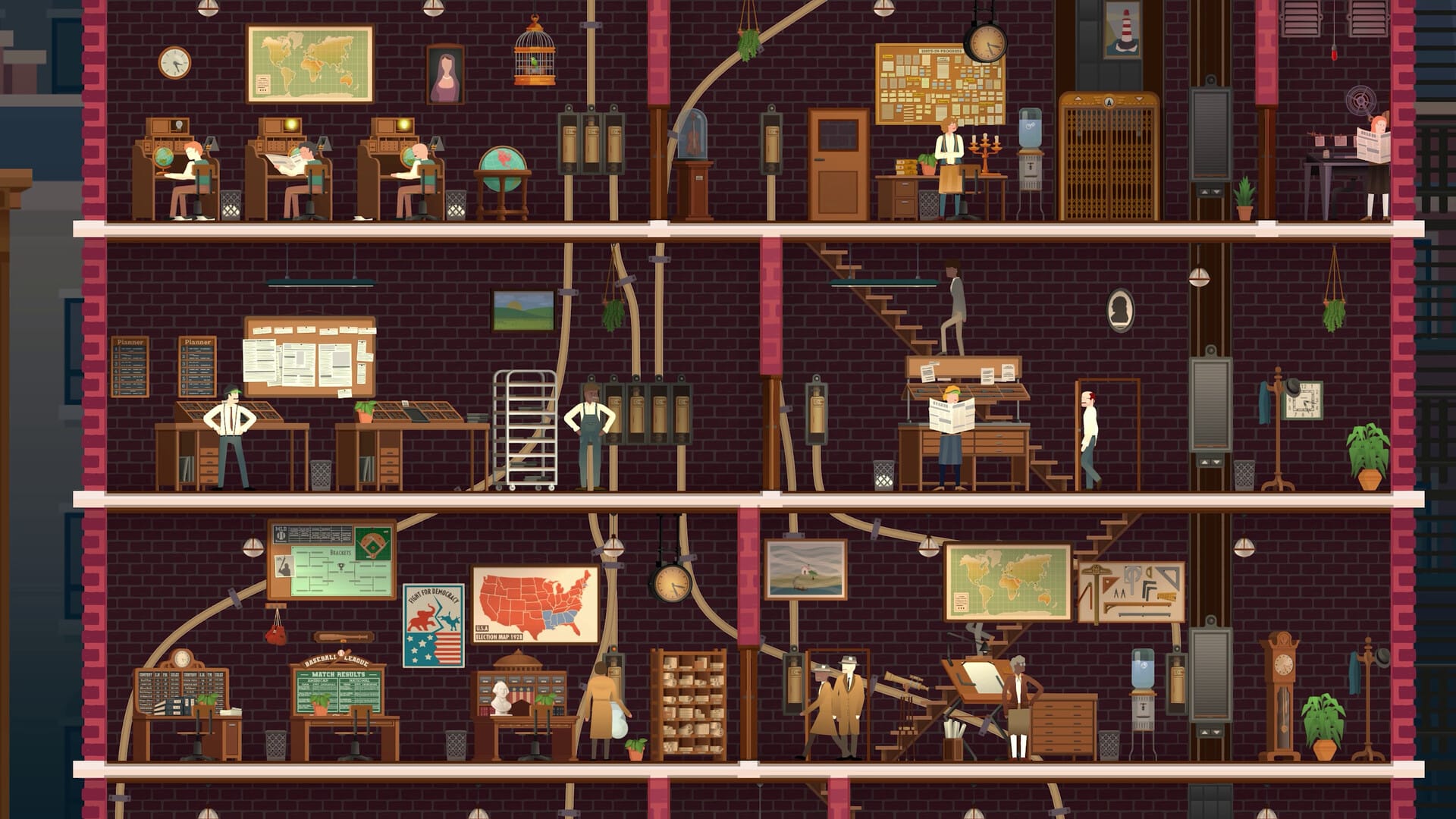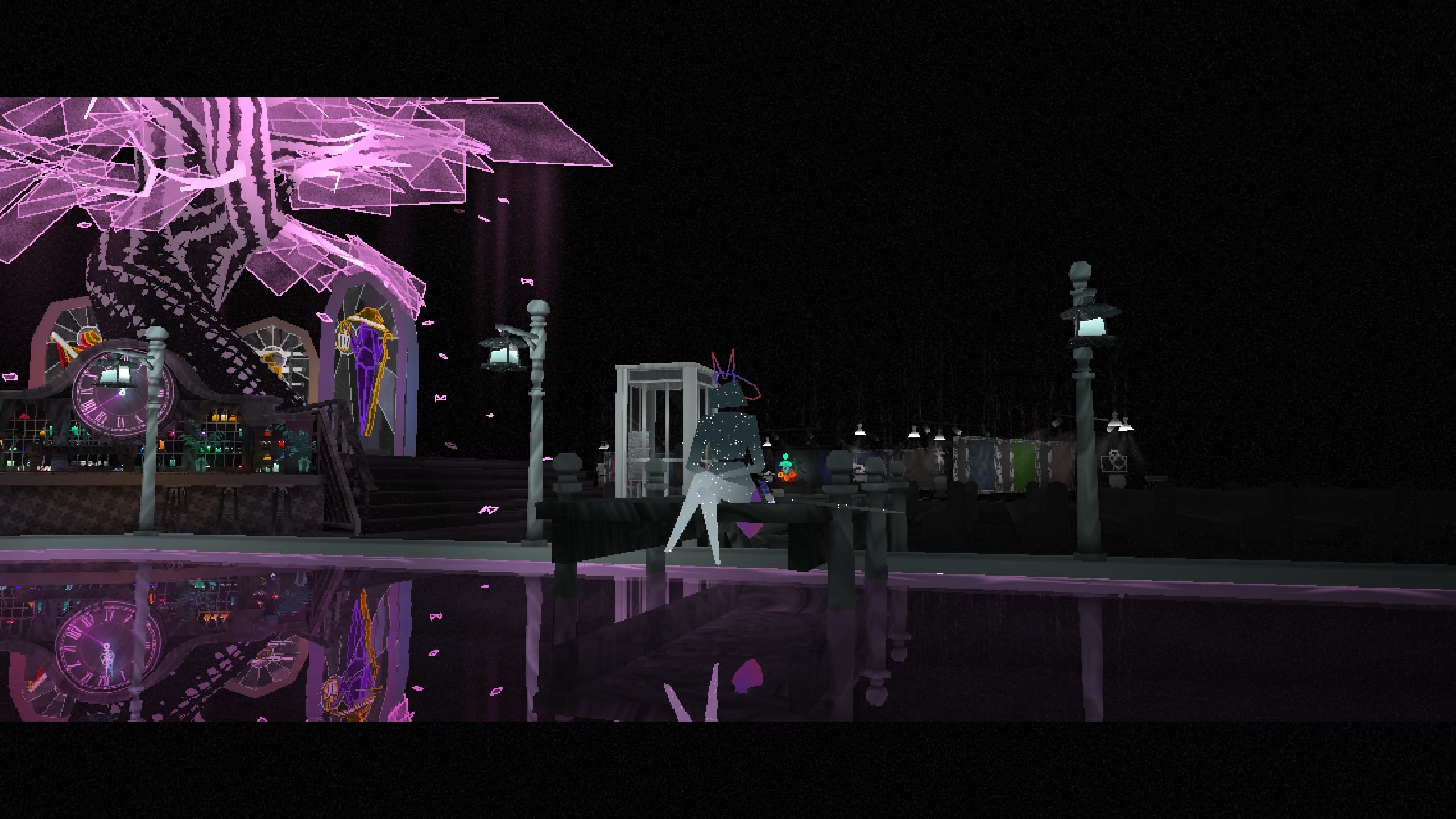My first run at the final boss was a great example of Shuffle Tactics at its best. It was my first time playing Fletch, an archer whose first starter deck is built around creating defenses like turrets and barriers to control the field and enhance his damage. Every stage leading to this point went as close to perfect as I could hope for. All the prep I accomplished put me in a good position.
I had a strong deck that let me cover the field in turrets to halt the enemy’s advance. My two allies, an assassin who could poison targets with each strike and have each stack of poison add more damage, and a tanky pugilist who could knock enemies around and emanated a field that increased the strength of nearby allies and granted passive healing as long as either of my other units were in proximity, had perfect synergy. I could sit back safely sniping enemies from afar while the other two could quickly cover ground and slay whatever stood in our way.
If anything was going to be The Run, this was it.
The final boss is the king of Asteria, a kingdom that has fallen victim to a corruptive force known as glimmer. Anyone afflicted by the glimmer becomes twisted by its influence, the very land itself eroded by its spread. The fight itself was long. The throne room was guarded by several strong foes while the king sat on his throne protected by a barrier. Some of the king’s guard could negate projectiles, meaning my arrows and turrets were useless against them. I could attack any other target with ease, but the two strongest and most threatening on the field would always end their turns with their shields raised. I had to rely entirely on my two allies to do the job. A steadily growing stack of poison and heavy punches to slam them into walls and barriers would work. I’d just need to ensure they both didn’t perish first.

It’s slow, but I get through them with everyone still in good shape. Second phase begins and immediately things start going south. The reach on the king’s sword is large and hits like a train. I make it a few turns before my allies die. Fletch at this point isn’t in great shape, but the situation is still salvageable. Through sheer luck, the way I placed my turrets makes it so the king can’t figure out a way past them. If I keep moving between standing behind cover and between two of the three active turrets, I can keep him permanently at bay and wait for the turrets to finish him off.
Then phase three arrives and complications happen. Some extra enemies spawn, forcing me to reposition to avoid their attacks. The turrets still deal plenty of damage, but eventually expire due to the new area of effect attacks the king uses. I get a few shots in before I have to retreat, leaving me one hit away from victory. Just one more turn…
Except I got poisoned and didn’t notice how much health I had left and died instantly upon ending my turn.
A roguelike is only as good as it’s ability to create stories. A good gameplay loop is key, of course, but the events of each run give value to the form beyond the simple arcade appeal of its run-based play. Shuffle Tactics, a roguelike deckbuilder in the form of a turn-based strategy game, does this well. The number of memorable moments from my time playing are many: clutch victories, poor planning backfiring spectacularly, enemy numbers growing to absurd levels to the point of covering most of the field, or stumbling into powerful card synergies that trivialized entire fights. It took time to properly settle into its rhythm, for the game to fully click and reveal the breadth of its tactical possibilities (the slow pace other characters and new decks unlock make the early goings rather plain), but once it began to open up, it was splendid.

Shuffle Tactics is largely a game about setup and leveraging the environment. This is seldom a game where simply throwing yourself at enemies dealing whatever damage you can will result in consistent victories – at least not most of the time. It heavily encourages altering tile properties, laying traps, and pushing targets into one another or walls or what have you. Glimmer tiles inflict vulnerability, while fire adds burning. Ice melts into water which doubles damage from electric attacks and so on.
Fletch, the archer, and Catalina, a mage, lean the most into setup as part of their core functions as they both rely on setting down structures to enhance their abilities and reach (at least with their initial starter decks). Doberknight on the other hand is largely melee focused and allows for a more direct approach. Each character has three decks they can choose from at the start, which influences the kind of playstyle you’ll need to adopt. Playing Doberknight with the sword throw deck is different from playing him with the kick deck, as the latter forces you to rely more on collisions than just attacking head on. This can change as you fill out and alter your deck, of course, but it works as a means to force the player to explore different playstyles and experiment.
I’m not the biggest deckbuilder fan – I enjoy them, but the difficulties that come with creating a deck tend to stymie me. Shuffle Tactics‘ variety of starter decks removes some of that barrier since I have a core strategy I can build around. It’s similar to Cobalt Core in how I know from the jump what I should focus on versus the more open-ended approach of a Slay the Spire, where each character has a clear identity, but also expects much more radical changes to the deck over time instead of just adding onto it. It’s a small thing, but I appreciate it all the same for how much easier it is for me to play and properly engage with the form.
Shuffle Tactics‘ approach to deckbuilding has a few unique wrinkles. Of note, the charms system and how they supplant most upgrades. Every card can be equipped with at least two charms that add additional affects. These range from simple damage buffs or bonuses from being played on certain tiles to more specific, fundamental alterations like making projectiles bounce between targets or making a card innate so that it is always drawn into your hand. Creating your deck isn’t just a matter of choosing cards and thinking about their innate abilities but also how they can potentially be aided by whatever charms you find. A card that doesn’t seem notable on its own can become much more valuable if you happen to find the right charm.

One particularly powerful combination I found used a sword charm to add a flat five damage to a card that would spawn corrupted fire on any tile with a few spaces of the Doberknight. The card cost nothing to play on first use and would immediately return to my hand afterward, meaning as long as I had the action points, I could keep playing it over and over to easily attack anyone from afar. If I could use the Doberknight’s oiled sword cards as well, the oil would make the flames’ damage even stronger. Likewise, with another one of his decks, I could attach charms that added piercing and bounce to his sword throw to make it pass through targets and bounce between nearby foes. And if that card was upgraded, it would also have much farther reach, allowing it to tear through entire groups of enemies instantly.
One problem with Shuffle Tactics is that the meta progression is slow. New cards and decks are unlocked as you level up each character, new characters being unlocked from wins. On paper this is fine, but in practice it feels unnecessary, especially because you can choose to unlock everything instantly. That’s good, to be clear, since it let me play the other characters much sooner (I spent a good dozen hours on Doberknight and got nowhere near the final boss), but it regularly made me wonder what the point of locking the characters in the first place. It was much more fun to play when I had more access to things instead of being limited to one character and one deck. It feels it exists because it’s expected rather than because it fits.
The core systems are good and the build variety make Shuffle Tactics able to carry tons of runs on its own. Holding everything back to be drip fed makes for a weak start. Progression has become a mainstay in most roguelikes now, for better or worse, but the specific ways it’s deployed don’t always serve them well. Shuffle Tactics is great fun, but unless you willingly unlock characters early, it takes a while for the game to truly shine.
Callum Rakestraw (he/him) is the Reviews Editor at Entertainium. You can find him on Bluesky, Mastodon, and his blog.





